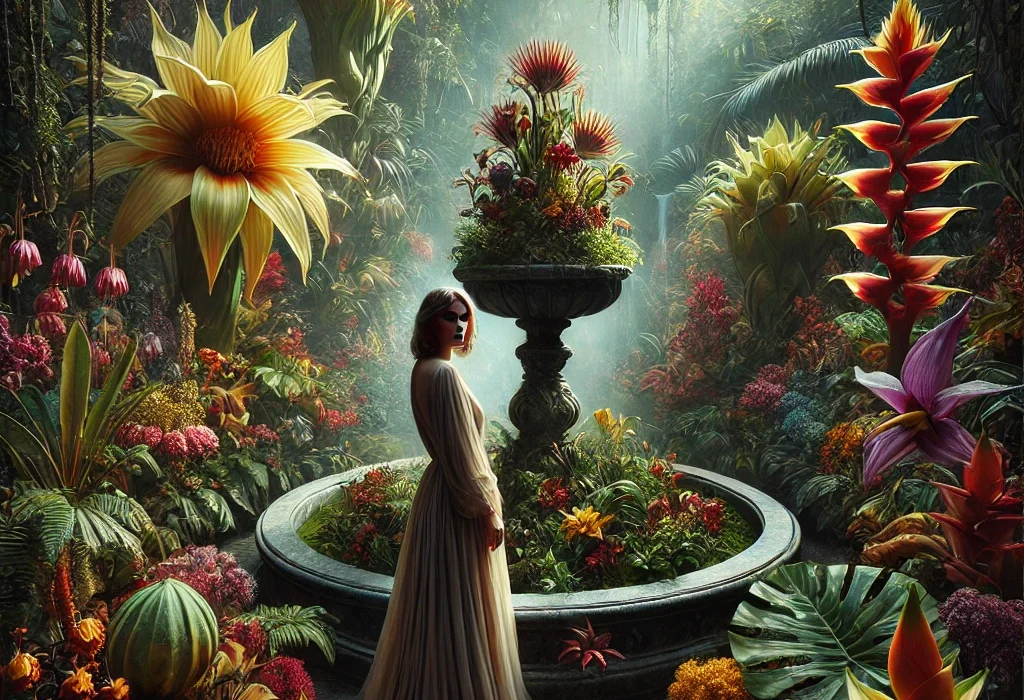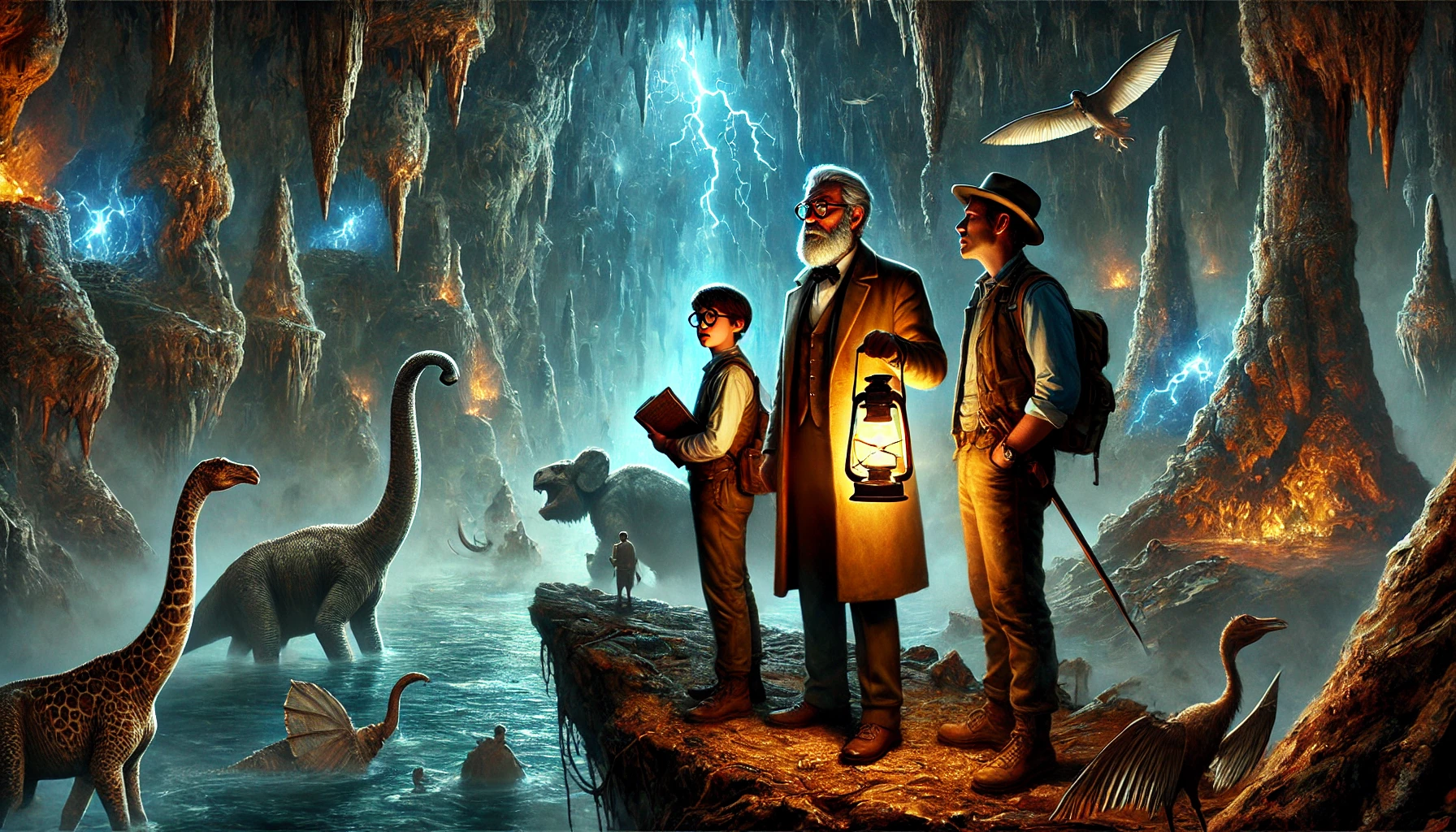“Rappaccini’s Daughter,” a short story by Nathaniel Hawthorne, was first published in 1844. Set in the Italian city of Padua, the tale explores themes of science, love, and the consequences of the pursuit of knowledge. The story revolves around a young student, Giovanni Guasconti, who becomes infatuated with a mysterious woman named Beatrice, the daughter of a scientist, Dr. Rappaccini. This story delves into the interplay of innocence and corruption, love and danger, in a setting that blends the real with the fantastical.
Comprehensive Plot Summary
In the ancient city of Padua, young Giovanni Guasconti arrives from southern Italy to pursue his studies. He finds lodgings in a grand but decaying mansion, its faded splendor hinting at a once-noble past. From his window, Giovanni looks out upon a luxuriant garden filled with a strange variety of plants. In the center, a marble fountain stands, around which an array of rare and exotic plants grows. One plant, in particular, stands out with its profusion of large, purple blossoms, each radiating an almost unnatural brilliance. Giovanni learns from his landlady, Lisabetta, that this garden belongs to the infamous Dr. Giacomo Rappaccini, a scientist renowned for his experiments with poisonous plants. Giovanni watches from his window as Dr. Rappaccini, a man of scholarly bearing but a sickly appearance, tends to his garden with a caution bordering on fear, avoiding direct contact with the plants and wearing thick gloves.
One day, Giovanni sees a young woman among the poisonous foliage. This is Beatrice, Rappaccini’s beautiful daughter, who moves among the plants with a natural grace, tending to them without any of the precautions her father takes. Her presence among the deadly flora astonishes Giovanni; she seems almost to be a part of the garden herself. The plants, which wither at the slightest touch from others, respond to her with an almost sentient affection, their vibrant colors seeming to intensify in her presence. As she approaches the central plant, the one with the stunning purple flowers, she addresses it as if it were a cherished companion, breathing in its scent and speaking to it in tones of sisterly love. Giovanni is entranced by her beauty and her mysterious connection to the garden.
Unable to resist his curiosity, Giovanni begins to linger at his window, watching Beatrice day after day. His fascination grows into an obsession, and despite the warnings from his mentor, Professor Pietro Baglioni, about Dr. Rappaccini’s dangerous experiments, Giovanni longs to meet her. Baglioni hints at dark secrets, suggesting that Rappaccini’s passion for science knows no bounds and that he has used his own daughter in his experiments. He warns Giovanni to stay away from the garden and the enchanting Beatrice. Yet, Giovanni’s desire only deepens, a potent mixture of love and dread pulling him towards the garden and the woman within it.
Driven by his longing, Giovanni finally arranges to meet Beatrice. She is as enchanting up close as she was from a distance, her voice like music, her demeanor gentle and innocent. However, Giovanni notices something unsettling; a butterfly that flutters too close to her drops dead at her feet, and flowers she touches wither in her grasp. Despite these ominous signs, he cannot resist her. He speaks with her daily, their conversations becoming the most important part of his existence. Beatrice is drawn to him as well, her eyes lighting up with a warmth that belies the deadly power she wields unknowingly.
As Giovanni’s infatuation deepens, he begins to notice strange changes in himself. His breath seems to have acquired a toxic quality, and flowers he touches begin to wither and die, much like the ones in Rappaccini’s garden. He becomes horrified at the realization that his proximity to Beatrice has somehow poisoned him. Distraught and angry, he confronts Beatrice, who reveals the truth. She has been nurtured on the poisons of the garden since childhood by her father, who sought to make her as immune to the plants as he is. Beatrice has lived her life in isolation, her touch and breath deadly to all but the poisonous plants. Despite this, she has retained her innocence and purity of heart, longing for human connection that her father’s experiments have denied her.
Giovanni’s horror turns to rage. He feels deceived, manipulated into becoming a part of Rappaccini’s experiment. In his anger, he accuses Beatrice of being a willing accomplice in her father’s schemes. Beatrice, heartbroken, denies any such intention. She has always yearned to be free of her poisonous nature, to live and love like a normal woman. Giovanni, however, is too consumed by his fear and loathing to listen. In his desperation, he turns to Baglioni, who offers him a silver vial containing an antidote, claiming it will rid Beatrice of her poisonous nature.
Giovanni brings the antidote to Beatrice, urging her to take it so they can be together. Beatrice, though she fears the consequences, agrees out of love and a desire to be free from her father’s influence. She drinks the antidote, but instead of curing her, it acts as a poison, destroying the very essence of her being. In her final moments, Beatrice laments that Giovanni could not accept her as she was, and curses her father for turning her into an object of his scientific obsession. Dr. Rappaccini arrives as she dies, looking upon his creation with a mixture of pride and sorrow, realizing too late that his quest for knowledge has cost him his daughter’s life.
Giovanni is left in stunned silence, realizing the depth of Beatrice’s love and the tragic cost of his inability to accept her. He has lost the one thing he desired most because he could not see past his fear and revulsion. Dr. Rappaccini, in his pursuit of scientific mastery, has created not a triumph, but a tragedy, sacrificing his daughter’s humanity on the altar of knowledge.
Main Characters
- Giovanni Guasconti: A young student from southern Italy, whose initial fascination with Beatrice turns into love and obsession. He is both naive and passionate, caught between his desire for Beatrice and his horror at her condition.
- Beatrice Rappaccini: The beautiful and innocent daughter of Dr. Rappaccini, who has been infused with the poisons of her father’s garden. Though deadly, she retains a pure heart and soul, yearning for human connection.
- Dr. Giacomo Rappaccini: A scientist obsessed with his experiments, who sacrifices his daughter’s humanity in the pursuit of knowledge. His cold, intellectual pursuit of science overrides any fatherly affection.
- Professor Pietro Baglioni: Giovanni’s mentor and a rival to Rappaccini. He serves as a voice of reason and caution, warning Giovanni of Rappaccini’s dangerous ambitions.
Themes and Motifs
- The Danger of Knowledge and Science: The story critiques the pursuit of scientific knowledge without ethical consideration. Rappaccini’s experiments show how the quest for knowledge can lead to the loss of humanity and innocence.
- Isolation and Alienation: Beatrice’s poisonous nature isolates her from the world, making her a tragic figure. Her isolation serves as a metaphor for the alienation that can result from being different or being used for others’ purposes.
- Love and Sacrifice: Giovanni’s love for Beatrice turns into horror as he realizes her nature, and his attempt to “cure” her leads to tragedy. The story examines the complexities of love, particularly when it involves sacrifice and the desire to change the beloved.
Writing Style and Tone
Hawthorne’s writing is rich and evocative, using elaborate descriptions to create a lush, almost otherworldly atmosphere. His tone is often somber and reflective, with a sense of foreboding that permeates the narrative. Hawthorne employs a blend of realism and the supernatural, crafting a tale that feels like a dark fairy tale. The narrative voice maintains an air of detachment, often delving into the philosophical and the moral implications of the characters’ actions.
The language is dense and poetic, filled with imagery that enhances the sense of beauty and danger within the story. Hawthorne’s style is also characterized by its use of allegory and symbolism, particularly in the depiction of the garden as both a place of beauty and death.
We hope that this summary has sparked your interest and would appreciate you subscribing to our newsletter.
There’s a treasure trove of other fascinating book summaries waiting for you. Check out our collection of stories that inspire, thrill, and provoke thought, just like this one by clicking here.
Remember, while our summaries capture the essence, they can never replace the full experience of reading the book. If this summary intrigued you, consider diving into the complete story – buy the book and immerse yourself in the author’s original work.
If you want to request a book summary, click here.
When Saurabh is not working/watching movies/reading books/traveling, you can reach him via Twitter/X, or LinkedIn.
Restart reading!






